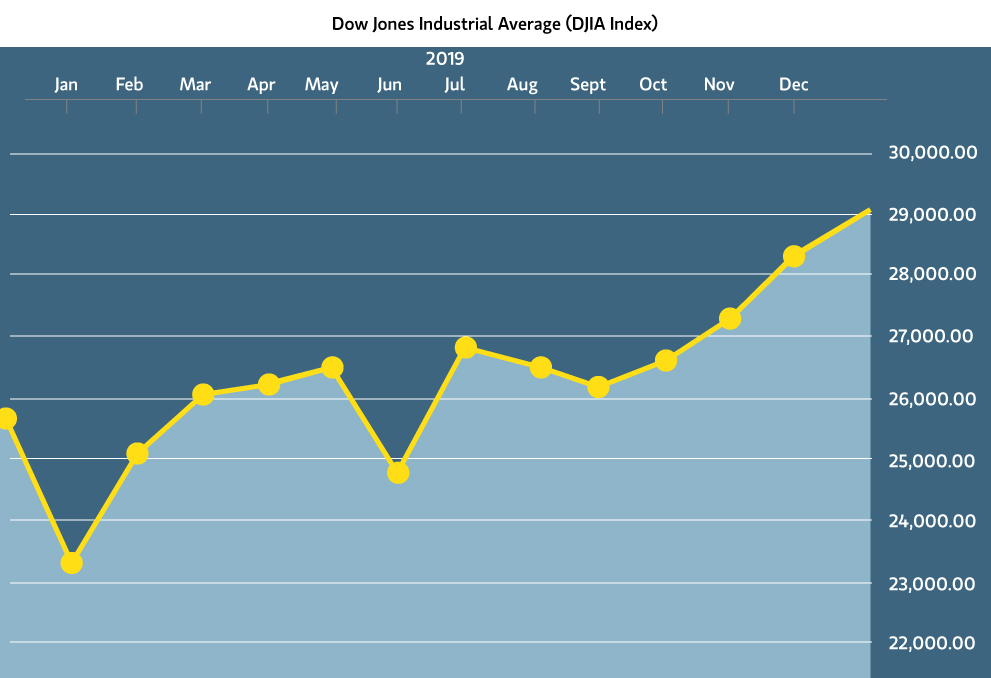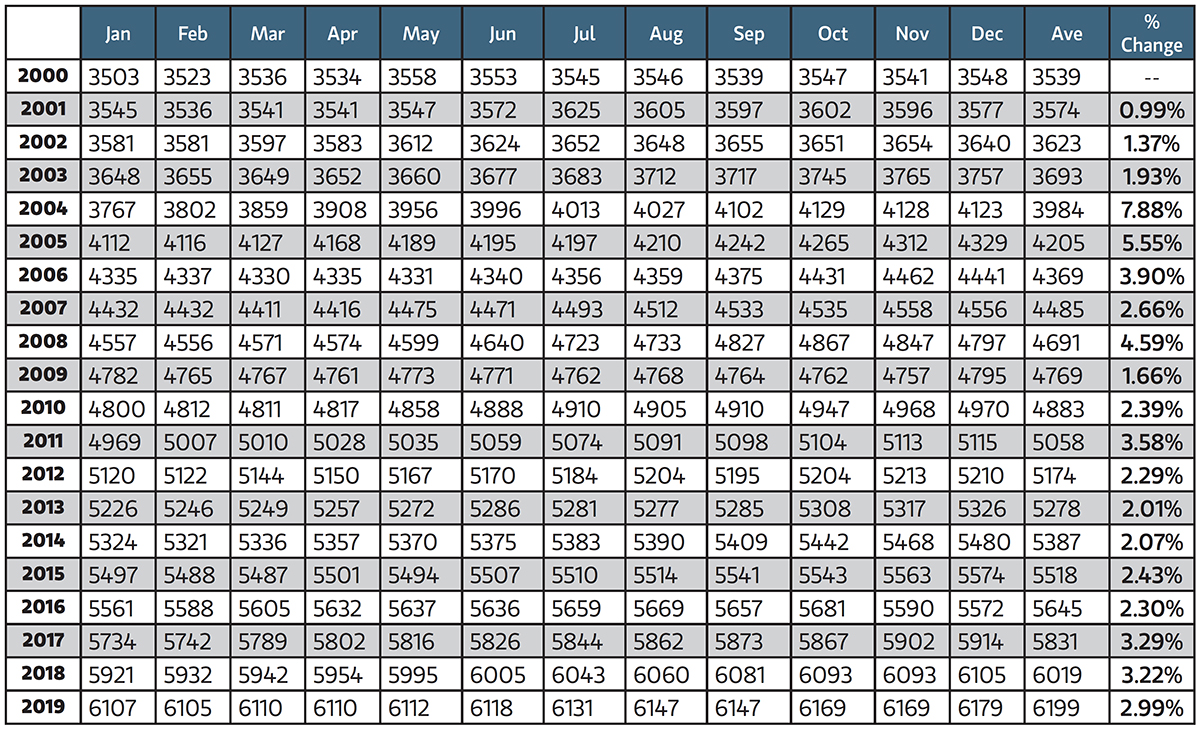As we begin the new year, trade tensions continue to be a concern. The USMCA trade deal was finally signed after Congressional negotiations secured some changes. Employers added 145,000 jobs and unemployment stayed at a 50-year low of 3.5 percent. Services companies grew more quickly, a sign that the economy’s steady expansion should continue. Consumer confidence slipped slightly in December and expectations fell about economic growth for the next six months.
Going into 2020, a fear of a recession topped the list of U.S. CEOs’ concerns, according to a Conference Board survey. In November, factory orders decreased, propelled by a steep decline in defense-related orders. U.S. tariffs against China triggered a slide in imports, contributing to the lowest trade deficit in three years. Consumer prices rose 0.3% as households paid more for energy, health care and rent, pushing the rate of inflation up to the highest level in a year. The six-month growth rate of the Leading Economic Index suggests that economic expansion is likely to stabilize around 2% in 2020.
The Engineering News Record Construction Industry Confidence Index (CICI) grew slightly from 51 points at the end of the 3rd quarter to 52 points at the end of 4th quarter. With 50 being a stable market, CICI was at or over 51 points for the past 27 quarters, although down 7 points from 1st quarter 2019.
Dow Jones Industrial Average Index started 2019 at 22,686 ended in Dec 2019 at 28,462.
And has gained 5,776 points in 2019.




General Note – 2020 is an election year where the economic growth is generally strong.
Architecture Billings Index (ABI) indicates that billings at architecture firms increased modestly for the second consecutive month in November, following several months of flat and declining billings.
SLAM Estimating recommends an escalation rate of three and 1/2 percent (3.050%) per year for the balance of 2019 and 2020 then four percent (4%) per year, thereafter.
